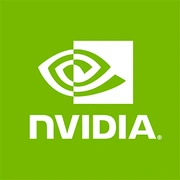NVIDIA GeForce GTX 1660 vs NVIDIA GeForce GTX 750 Ti OEM
GPU Comparison Result
Below are the results of a comparison of
NVIDIA GeForce GTX 1660
and
NVIDIA GeForce GTX 750 Ti OEM
video cards based on key performance characteristics, as well as power consumption and much more.
Advantages
- Higher Boost Clock: 1785MHz (1785MHz vs 1098MHz)
- Larger Memory Size: 6GB (6GB vs 2GB)
- More Shading Units: 1408 (1408 vs 960)
- Higher Bandwidth: 192.3 GB/s (192.1 GB/s vs 192.3 GB/s)
Basic
NVIDIA
Label Name
NVIDIA
March 2019
Launch Date
-
Desktop
Platform
Desktop
GeForce GTX 1660
Model Name
GeForce GTX 750 Ti OEM
GeForce 16
Generation
GeForce 700
1530MHz
Base Clock
1033MHz
1785MHz
Boost Clock
1098MHz
PCIe 3.0 x16
Bus Interface
PCIe 3.0 x16
6,600 million
Transistors
2,540 million
88
TMUs
?
Texture Mapping Units (TMUs) serve as components of the GPU, which are capable of rotating, scaling, and distorting binary images, and then placing them as textures onto any plane of a given 3D model. This process is called texture mapping.
80
TSMC
Foundry
TSMC
12 nm
Process Size
28 nm
Turing
Architecture
Kepler
Memory Specifications
6GB
Memory Size
2GB
GDDR5
Memory Type
GDDR5
192bit
Memory Bus
?
The memory bus width refers to the number of bits of data that the video memory can transfer within a single clock cycle. The larger the bus width, the greater the amount of data that can be transmitted instantaneously, making it one of the crucial parameters of video memory. The memory bandwidth is calculated as: Memory Bandwidth = Memory Frequency x Memory Bus Width / 8. Therefore, when the memory frequencies are similar, the memory bus width will determine the size of the memory bandwidth.
256bit
2001MHz
Memory Clock
1502MHz
192.1 GB/s
Bandwidth
?
Memory bandwidth refers to the data transfer rate between the graphics chip and the video memory. It is measured in bytes per second, and the formula to calculate it is: memory bandwidth = working frequency × memory bus width / 8 bits.
192.3 GB/s
Theoretical Performance
85.68 GPixel/s
Pixel Rate
?
Pixel fill rate refers to the number of pixels a graphics processing unit (GPU) can render per second, measured in MPixels/s (million pixels per second) or GPixels/s (billion pixels per second). It is the most commonly used metric to evaluate the pixel processing performance of a graphics card.
21.96 GPixel/s
157.1 GTexel/s
Texture Rate
?
Texture fill rate refers to the number of texture map elements (texels) that a GPU can map to pixels in a single second.
87.84 GTexel/s
10.05 TFLOPS
FP16 (half)
?
An important metric for measuring GPU performance is floating-point computing capability. Half-precision floating-point numbers (16-bit) are used for applications like machine learning, where lower precision is acceptable. Single-precision floating-point numbers (32-bit) are used for common multimedia and graphics processing tasks, while double-precision floating-point numbers (64-bit) are required for scientific computing that demands a wide numeric range and high accuracy.
-
157.1 GFLOPS
FP64 (double)
?
An important metric for measuring GPU performance is floating-point computing capability. Double-precision floating-point numbers (64-bit) are required for scientific computing that demands a wide numeric range and high accuracy, while single-precision floating-point numbers (32-bit) are used for common multimedia and graphics processing tasks. Half-precision floating-point numbers (16-bit) are used for applications like machine learning, where lower precision is acceptable.
87.84 GFLOPS
5.128
TFLOPS
FP32 (float)
?
An important metric for measuring GPU performance is floating-point computing capability. Single-precision floating-point numbers (32-bit) are used for common multimedia and graphics processing tasks, while double-precision floating-point numbers (64-bit) are required for scientific computing that demands a wide numeric range and high accuracy. Half-precision floating-point numbers (16-bit) are used for applications like machine learning, where lower precision is acceptable.
2.15
TFLOPS
Miscellaneous
22
SM Count
?
Multiple Streaming Processors (SPs), along with other resources, form a Streaming Multiprocessor (SM), which is also referred to as a GPU's major core. These additional resources include components such as warp schedulers, registers, and shared memory. The SM can be considered the heart of the GPU, similar to a CPU core, with registers and shared memory being scarce resources within the SM.
-
1408
Shading Units
?
The most fundamental processing unit is the Streaming Processor (SP), where specific instructions and tasks are executed. GPUs perform parallel computing, which means multiple SPs work simultaneously to process tasks.
960
64 KB (per SM)
L1 Cache
16 KB (per SMX)
1536KB
L2 Cache
512KB
120W
TDP
150W
1.3
Vulkan Version
?
Vulkan is a cross-platform graphics and compute API by Khronos Group, offering high performance and low CPU overhead. It lets developers control the GPU directly, reduces rendering overhead, and supports multi-threading and multi-core processors.
1.1
3.0
OpenCL Version
3.0
4.6
OpenGL
4.6
7.5
CUDA
3.0
12 (12_1)
DirectX
12 (11_0)
1x 8-pin
Power Connectors
-
48
ROPs
?
The Raster Operations Pipeline (ROPs) is primarily responsible for handling lighting and reflection calculations in games, as well as managing effects like anti-aliasing (AA), high resolution, smoke, and fire. The more demanding the anti-aliasing and lighting effects in a game, the higher the performance requirements for the ROPs; otherwise, it may result in a sharp drop in frame rate.
24
6.6
Shader Model
5.1
300W
Suggested PSU
450W
Benchmarks
FP32 (float)
/ TFLOPS
GeForce GTX 1660
5.128
+139%
GeForce GTX 750 Ti OEM
2.15

